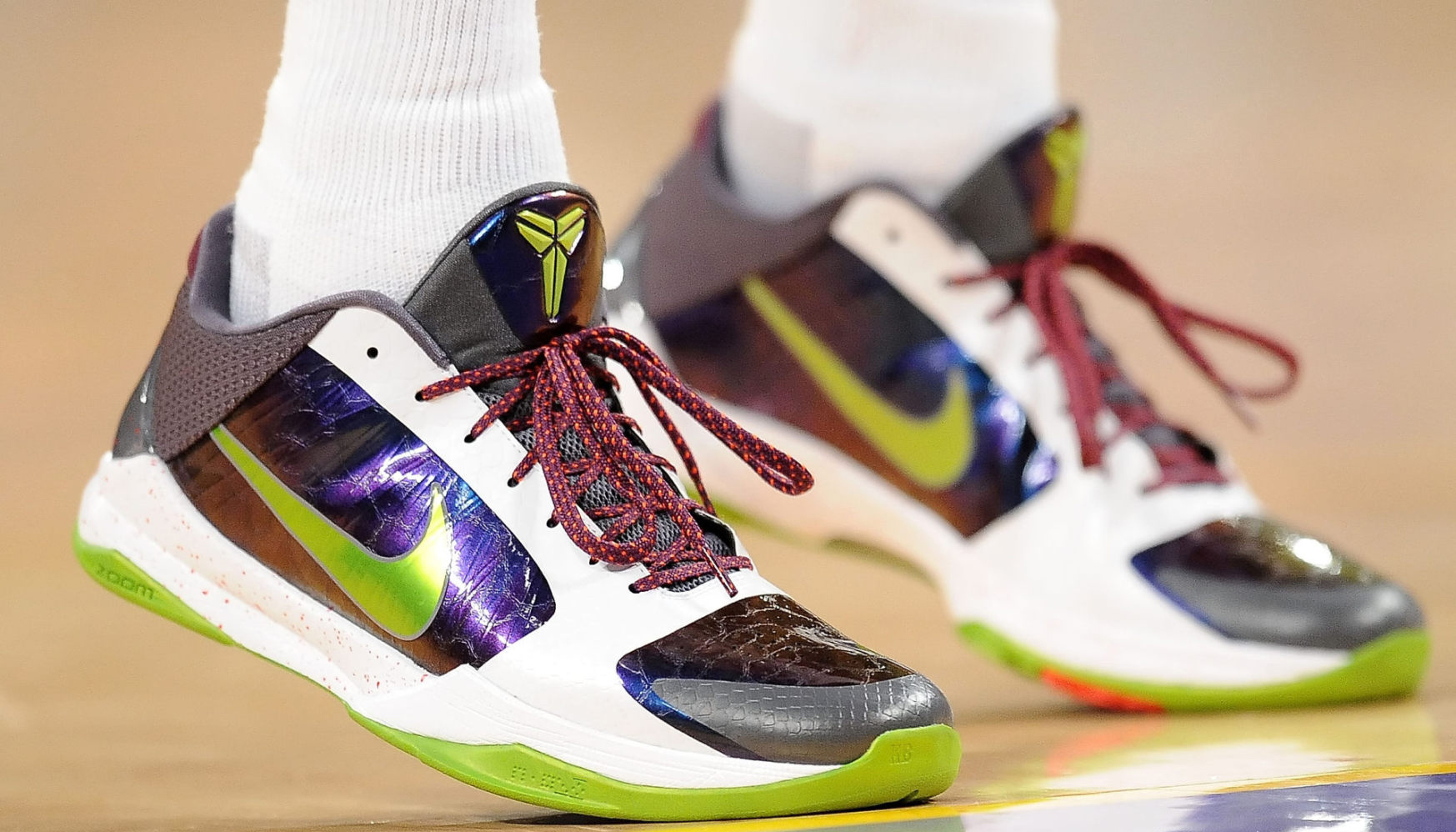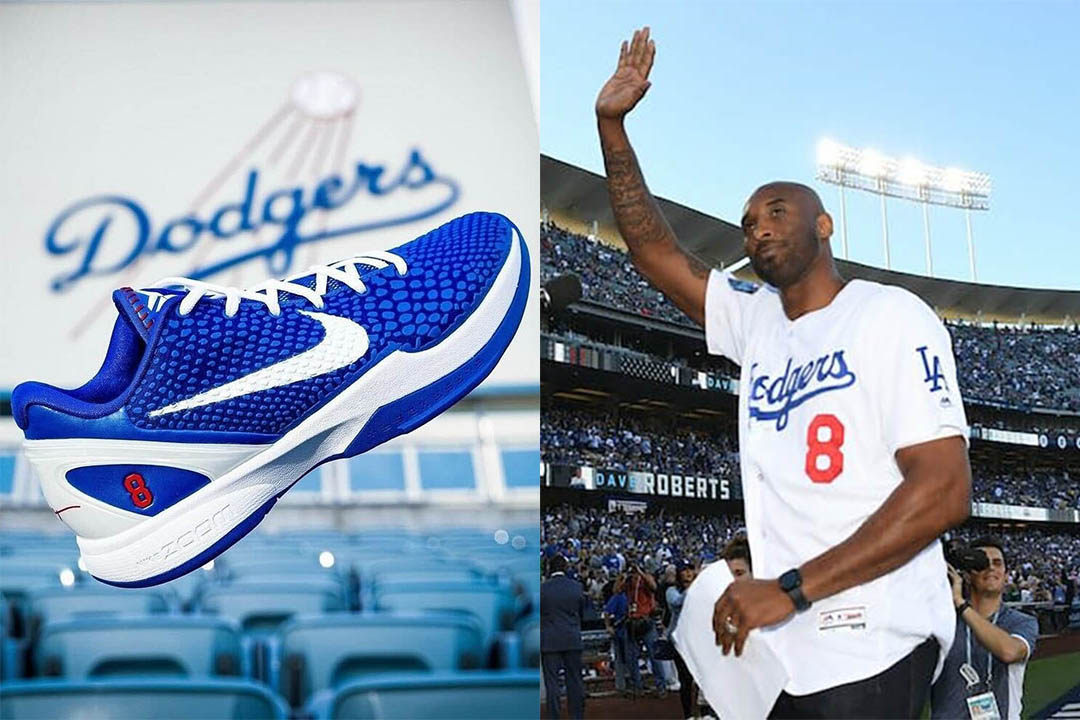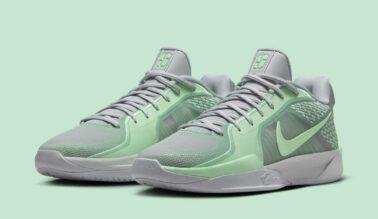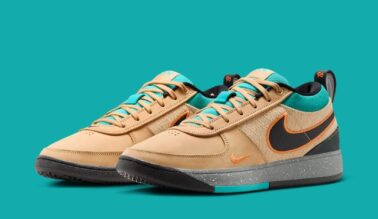This post may contain affiliate links. Please read our disclosure policy.
His legacy among the game’s greatest players of all time is certainly fully locked in, and as Kobe Bryant turns 37 years-old today and enters what just might be his final NBA season, his legacy and contributions to the sneaker game are equally as certain.
Ever since shifting the industry to a new openness to low-tops with the introduction of the Kobe IV, Bryant’s signature series has helped to shape the modern era of on-court performance sneakers.
Check out all of Kobe’s Nike signature sneakers below — ranked from best to worst — and let us know on Twitter or in the poll section what your favorite on-court pairs are.
1.) Nike Zoom Kobe 5
The Good: Lovers of lockdown got glove fit with yoga flexibility on the Nike Zoom Kobe V. Replacing the well-liked but bottom-out prone Lunarlon cushioning seen on the 4 with always awesome Zoom Air, the Kobe V lasted longer and played lower than previous Mamba makeups. Evolved Flywire proved lighter and leaner on top, while a padded torch tongue literally and figuratively tied everything together for a snug but soft fit.
The Bad: Flaws are few on the Kobe V, but one common complaint was traction. While the aesthetic of the heartbeat pattern looked cool and worked reasonably well, it didn’t grip or last at the level of other Kobe models. Simply using herringbone would’ve made this a strong candidate as one of the greatest playing shoes of all time.
_______________________________________________________________________
2.) Nike Zoom Kobe IV
The Good: While other shoes like the Jet Flight and Gil Zero were certainly flagship low-top models, it wasn’t until the Kobe IV released in 2009 that an entire era of players of all sizes would be seen playing in low-cut sneakers. With a low yet protective collar, incredible traction, lockdown, fit and sharp support, the Kobe IV was the breakout model of Kobe’s Nike series and was adopted on courts nationwide.
The Bad: After the introduction of Lunar Foam in the Hyperdunk, the Kobe IV followed it up and also incorporated Nike’s newest tech into the forefoot. Most everyone would’ve preferred Zoom Air. The Lunar Foam bottomed out within a handful of wearings and couldn’t hold up to the rigors of hoops. Otherwise, the Kobe IV was nearly perfect.
_______________________________________________________________________
3.) Nike Zoom Kobe II
The Good: With Nike’s Free principles setting the foundation for the shoe’s outsole configuration, the Kobe II sat lower to the ground and offered up more court feel than any shoe before it. Combined with two full-volume Zoom Air units in both the heel and the forefoot, the cushioning was substantially responsive. The upper, while weighty by today’s standards, featured a series of support overlays and a lockdown strap, all contained over the shoe’s footbucket construction, meaning you were locked in all game long.
The Bad: For some people, the heel counter was just a tad too firm, and rubbed against the wearer’s Achilles tendon. This forced some to wear a thicker sock than preferred to reduce any irritation. Of course, the shoe is also slightly heavy as it aged, as they were constructed with a multi-overlay thick leather upper throughout.
_______________________________________________________________________
4.) Nike Kobe 8
The Good: By the line’s 8th model, there was a distinct and expected formula that was working for the Kobe series. The 8 featured a no-frills herringbone pattern with a contoured Phylon midsole that was both striking and supportive. The upper introduced engineered mesh, allowing the shoe to provide better flexibility than the 6 and 7 before it. The biggest shift was the introduction of the full drop-in Lunarlon insole, which though not as responsive as targeted Zoom Air, was a huge hit on-court for many and also more casually comfortable.
The Bad: From a fit and feel standpoint, the 8 didn’t have many downsides. The collar height and heel counter also worked well together. If anything, most people’s overall opinion of the 8 simply came down to their preference for Zoom or Lunarlon.
_______________________________________________________________________
5.) Nike Zoom Kobe 6
The Good: Aesthetically, the Nike Kobe 6 was the first massive casual crossover for the Kobe line, birthing the Grinch-inspired “Christmas” colorway and sporting scales in true signature fashion. Zoom Air was carried over from the V, which continued to win in the cushioning department as did Torch padding on the tongue.
The Bad: The collar and eyelet configuration just didn’t work all the way on the Nike Kobe 6. When toggling with the top two eyelets, you always felt like the shoe wasn’t hitting the ankle right and the pressure points were off. This issue even inspired YouTube reviewer Jefferrrson to maneuver a new means of lacing and tying the shoe. Like the V before it, traction was a bit of an issue, as the design opted for more storytelling than true performance. And lastly, while the scales on the upper were a nice visual play, the upper didn’t breathe or bend as well as the previous pair.
_______________________________________________________________________
6.) Nike Zoom Kobe 1
The Good: With Kobe hitting the weights hard and bulking up, and also coming off of a knee injury, he specifically requested more cushioning and padding than he wore in the Huarache 2K series, making for a debut signature model that focused on impact protection and a plush ride. The shoe’s TPU heel counter and forefoot midsole wedge offered great support and lockdown, and the multi-directional traction pattern was a major hit on-court as well.
The Bad: With a mostly leather upper, the shoe just didn’t hug the foot the way many mesh-based composite materials would later on, and fit a little more sloppy and wide than his ensuing models would. The heel notch silhouette was also a bit awkward, and a more traditional mid-cut would’ve been preferred.
_______________________________________________________________________
7.) Nike Kobe 9 Low
The Good: After following a similar blueprint for five models in a row, the 9 saw a huge shift for the Kobe series, with the introduction of Flyknit and a fully dynamic and ergonomic outsole design. The outsole’s grip was unreal, and a major flex of Eric Avar’s performance design prowess. Many also loved the newly constructed midsole’s stellar support too, which featured huge helpings of carbon fiber (or TPU) in a high-wrapping chassis.
The Bad: Unlike the Flyknit uppers seen in Running or from other brands, the 9’s upper was more window treatment than anything, as it was actually fully backed by reinforcement layers. The result was an upper that wasn’t as soft or flexible as other knit-based shoes, as Nike focused more on ensuring the shoe was still supportive enough for hoops.
_______________________________________________________________________
8.) Nike Kobe 9 Elite
The Good: The Kobe line was already headed to an extremely high silhouette cut regardless, as Eric Avar designed it before Bryant’s disastrous Achilles tear in the spring of 2013, but the story worked well, and the high, high top was something from a proprioception standpoint that many hoopers enjoyed playing in. In tandem with the shoe’s support chassis, drop-in Lunarlon insole and incredibly well-done traction pattern, the shoe performed for players of all sizes.
The Bad: With the added height and a fully-backed Flyknit upper, the breathability of the 9 was seriously terrible. And as always, lovers of Zoom Air once again weren’t crazy about the drop-in Lunarlon insole. The $225 price was also tough to ever fully justify.
_______________________________________________________________________
9.) Nike Kobe X
The Good: With a fairly underwhelming design for what would be Kobe’s 10th signature series, the shoe is still adept at all of the things you’ve come to expect from his line. The targeted collar height, midfoot fit and lockdown are all there. The shoe’s Lunarlon drop-in is comfortable, though not explosively responsive, and the traction is reliable and solid.
The Bad: While the re-addition of Zoom Air is cool and all, everyone knows that it’d be better served in the forefoot instead of heel. While Nike has gradually evolved their use of engineered meshes, the upper is largely unspectacular on these. The $180 retail price is simply offensive. The shoe follows much of what has made the line successful since the IV, but doesn’t take us anywhere new, as many may have expected being it was a landmark model in number alone.
_______________________________________________________________________
10.) Nike Kobe 8 Elite
The Good: The Kobe 8’s Elite edition looked to improve on many of the model’s existing attributes, like upgrading the plastic heel counter to a true carbon fiber, throwing in Kevlar-equipped laces or adding visible Flywire cables to the forefoot. It also switched out the drop-in Lunarlon insole for a new drop-in sockliner that featured both heel and forefoot Zoom Air units.
The Bad: While it was cool to pull the sockliner out and actually see the Zoom Air bags, the shoe would’ve been much better served if the Zoom Air was simply embedded into a more traditional midsole construction. As we found out on the Kobe 7, the thick insole compromised the shoe’s ride and flexibility, and made for a more clunky ride than expected.
_______________________________________________________________________
11.) Nike Zoom Kobe III
The Good: With the IV’s impending breakout season just around the corner, the 3 proved to be a lost-in-the-shuffle model for the series. The high cut was backed by a plush and comfortable mesh liner, and the shoe’s exaggerated outrigger was tremendously supportive on cuts and drives.
The Bad: It’s as if this shoe was made with the blacktop in mind first, and the hardwood as a second priority. The diamond-inspired traction pattern (Kobe had just named his recently-born daughter Natalia Diamante…) didn’t work great indoors, and left you swiping often in hopes of solid grip. The rubber-engulfed upper was great for dealing with outdoor abrasion, but not entirely necessarily for the indoor game. The shoe also had an odd stance to it, as the heel dipped, when you’d actually want to feel like you were playing on your toes.
_______________________________________________________________________
12.) Nike Kobe X Elite
The Good: Much like the Low, the X Elite incorporates sturdy support, reliable traction and a drop-in Lunarlon insole for above-average cushioning. The Elite’s high cut upper also features Flyknit, in a more flexible and pliable execution than we saw on the 9. The shoe has a stable base, highlighted by heel Zoom Air and a sharp and targeted two-pronged TPU support wing on the forefoot.
The Bad: The $225 price is entirely ridiculous, given there are so many better performing shoes at much lower prices. The shoe isn’t remotely good enough or industry-evolving enough to warrant such a high price. While satisfactory on many levels, the cushioning and transition leave a bit to be desired.
_______________________________________________________________________
13.) Nike Zoom Kobe II Strength
The Good: As great as the launch version of the Kobe 2 was, the “Strength” model incorporated two straps over the tongue and featured a more simplified but excessively thick leather upper. The shoe’s Zoom Air units and Free-principled outsole still offered up great cushioning and traction, and the irritation points of the 2’s initial collar construction were improved by a plush neoprene tongue sleeve.
The Bad: It was heavy as hell. The shoe’s upper and straps were made out of some truly impressive and thick leathers, and also had metal accent ends on the straps, which added way too much weight to the shoe. The breathability sucked and they also got incredibly hot.
_______________________________________________________________________
14.) Nike Kobe VII System
The Good: From a technical standpoint, the Kobe VII introduced modular cushioning and convertible support to the Black Mamba franchise. In regard to support, the Kobe VII may be the sturdiest shoe in the Kobe line, other than the first two models. It felt more capable for a bigger player in both low and wrapped-up form, offering versatility never seen in the series.
The Bad: While modular capabilities were a good idea in theory, it made for somewhat lackluster lockdown and a fit that leaned toward bulky or roomy depending on the system. The Kobe VII was certainly stiffer than previous pairs, an aspect that could prove pro or con depending on the wearer. In general, the concept was awesome but the execution and comfort wasn’t all the way there.
_______________________________________________________________________
15.) Nike Kobe VII Elite
The Good: With an upped price came some upgraded performance cues on the first Kobe model to feature an Elite edition. There was the full-length Zoom Air embedded into the drop-in sockliner, the carbon fiber heel counter and mifoot shank, Kevlar-infused laces and the nubbed no-slip insole footbed.
The Bad: While all of those upgrades sound great on paper, the shoe also featured a fully rubberized upper that hardly flexed with the foot and took quite a while to break in. If the initial VII felt stiff to some, the Elite was that much worse from a flexibility and comfort standpoint. The $200 price wasn’t winning anyone over either.
_______________________________________________________________________
16.) Nike Zoom Kobe II Lite
The Good: The collar featured Nike’s Sphere Lining, which is seriously one of the most plush and comfortable liner materials Nike has ever used. (It’s crazy they’ve entirely ditched it.) The platform’s Zoom Air bags are directly underfoot and perfectly responsive, and the podular Free-principled herringbone traction pattern also worked great.
The Bad: With a basic full leather upper, the shoe’s collar cut was simply too restrictive and ill-fitting to ever work. The forefoot was sloppy and didn’t provide enough lockdown or support for cuts. Even though the name may have implied these were “Lite,” they certainly weren’t when they released in 2007, and aren’t even close by today’s standards. The shoe simply didn’t flex or articulate as hoped either, and is well behind the more modern and well-contoured performance high cuts like the Hyperdunk 2015.
[polldaddy poll=9039029]




